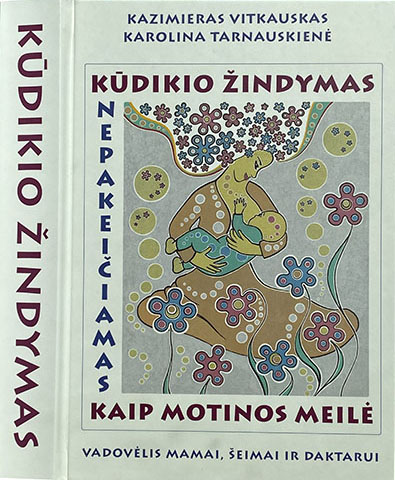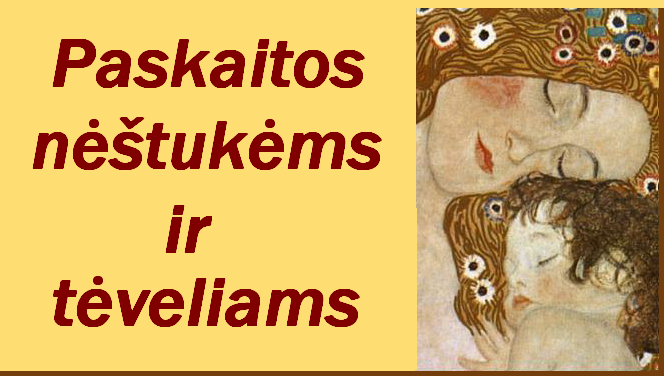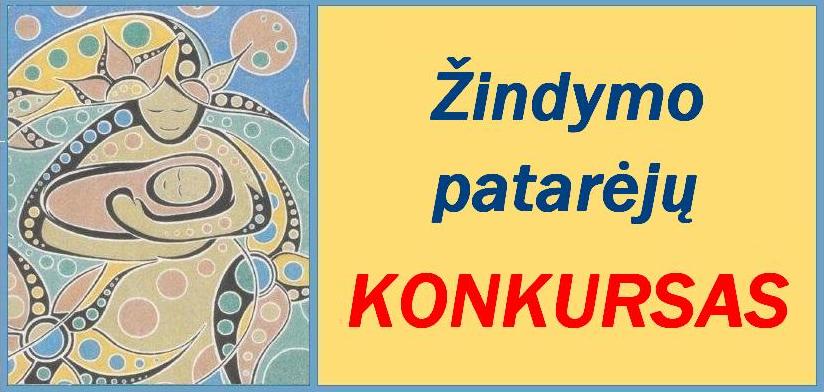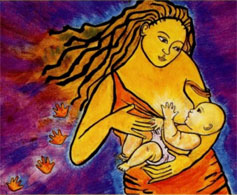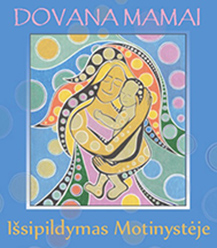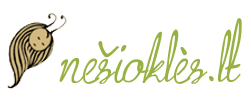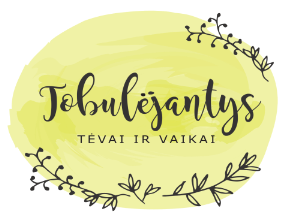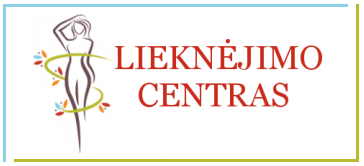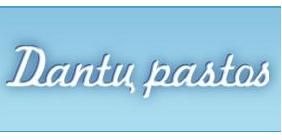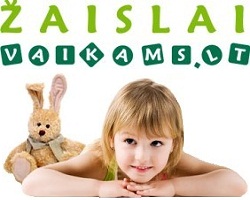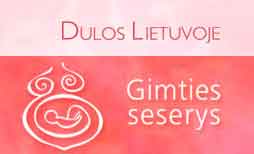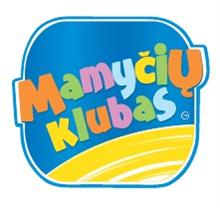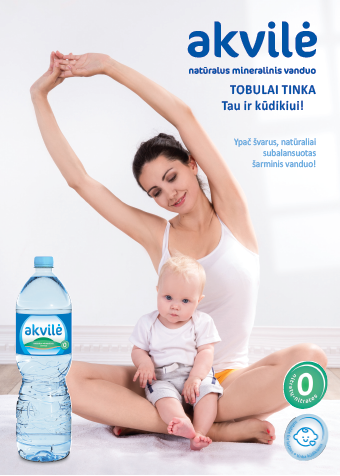This book is the first monograph on breastfeeding written in Lithuania. The title – Irreplaceable Like Mother‘s Love („Nepakeičiamas kaip motinos meilė“) – means that woman‘s breast milk is a unique creation of Nature designed for human infant and cannot be replaced by any other food. Breast milk has everything necessary for baby to grow and develop. A number of special substances and even live cells protect the little one against allergies and many infectious diseases. Breastfeeding as a process is also irreplaceable. It is Nature’s way to supply food for baby, always fresh, warm and clean. Breastfeeding guarantees physical and emotional closeness essential for baby’s sense of safety, and his development as a sound personality. It is important for harmonious relationship between mother and child and in whole family. So breastfeeding itself is some kind of mother’s love to her baby, and baby’s love to his mother.
Breastfeeding also brings various specific health benefits for mother as well. Already the very first attachment neuro-humoraly stimulates mother’s womb to contract and therefore helps to push out placenta and stops bleeding. Those women who had no abortions and breastfed for longer periods are significantly less prompt to get sick with ovarian cancer and breast cancer which is the most rampant oncological disease. Lactation improves assimilation of calcium and reduces incidence of bone fractures because of osteoporosis in older age.
All the advantages of human milk and breastfeeding are discussed in chapter Choose the Best (“Rinkis geriausią”). The worse choice – bottle feeding with formula – would bring some hazards and they are mentioned here too. Free democratic society acknowledges mothers and families’ right to chose freely the way of feeding their baby. However, the choice is really free and right when it is based on knowledge. When I sat down to write this book my greatest wish was to provide the readers with contemporary information about breastfeeding and breast milk, and its “alternatives”. The choice is up to you…
Next chapter The Science of Breastfeeding (“Žindymo mokslas”) displays mother’s breast anatomy, physiology of milk production, and mechanics of milk transfer from lactating cells to baby’s mouth. Let your baby control the process of breastfeeding. He knows better than anyone else when he is hungry and how much he wants to eat. Therefore, the primary rule of breastfeeding science says: do not write any strict rules how often and how long baby must be fed. However it is useful to remember that more frequent feeding and shorter intervals between feedings stimulate new milk production while longer intervals and milk stasis depress it. Milk removal depends on quality of baby’s attachment to breast. If attachment is good, you could see that baby’s mouth is widely open and takes inside nipple together with the most of areola too (picture 14, on the left). When attachment is bad baby sucks only nipple (picture 14,on the right) and many problems is getting to stand in the queue…
The Best Beginning (“Geriausia pradžia”) is observance of five “no”: (1) no delay of the first attachment, (2) no newborn baby separation from mother, (3) no other food or drink given to a newborn except breast milk, (4) no artificial teats, as pacifiers or on bottles, and (5) no schedules of breastfeeding. Nature and modern science say: newborn must be put on mother’s chest and be allowed to seek for her breast immediately after delivery. Baby finds there colostrum that is not only a very valuable and special food for the newborn but gives him the first immunization too. This first attachment also triggers production of new milk in mother’s breast. Nature gifted newborn with ability to snuggle to mother’s breast correctly, and provide this by inborn reflexes. Seeking for food baby instinctively opens his mouth widely. Do not give the newborn to suck anything except his mother’s breast. Artificial nipples like pacifiers or teats on bottles could deteriorate baby’s skills of good attachment. All other drinks given to a baby could suppress his appetite for mother’s milk. Being together round the clock and sleeping next to each other protect mother and baby from stresses of separation and allows baby to ask for and enables mother to give him her breast every time when there is a need – at day and night. Convenient conditions for the best beginning you will find in Baby Friendly Hospital which has implemented in practice the policy of Ten Steps to Successful Breastfeeding.
When you return home you are indispensable “professional”. Nobody else could breastfeed the new baby but only mother! This occupation is your main “staff-position” Other routine things like cooking, sweeping, washing, shopping… could be quite well done by other people. I have no doubt that your relatives know how vitally important is their psychological support and physical assistance for a new mother. Good mood, healthy food and pleasurable environment are desirable for breastfeeding success. Once you had a short sleep at night, do not miss the opportunity to take a nap next to baby when he sleeps in the daytime. Enjoy breastfeeding! Memories of these days will warm your heart throughout the lifetime.
What Should You Eat? (“Ką valgyti?”). Breastfeeding mother is a human being like all us, and she needs all the nutrients for life and sometimes dainties, for joy. Of course, principles of healthy nutrition and compatibility of food products are important too. Do not avoid fresh vegetables, fruits and berries as they are the source of natural vitamins. Strict vegetarians must keep in mind that vitamin B12 which is essential for development of blood cells and little child’s neurological system could be found only in products of animal origin. So, if you are a breastfeeding vegan, please think twice or take specific dietary supplements.
Drink as you like (not alcohol!). Although a breastfeeding mother’s demand for liquids is bigger, you should not overdo. Overdiluted blood brings to lactating breast relatively less nutrients and generation of milk could slow down. Also it would be a silly idea to overeat seeking to increase breast milk production. Digestion and assimilation of excessive food requires extra energy, which could be stolen from lactation process. Breast milk production mainly depends on baby’s demand, which is realized by suckling and emptying the breast. Unnecessary food usually is converted to nutrients store and kept in mother’s body as fat reserve against a rainy day. Yes, mother’s body fat could be employed for breast milk production if some time food shortage happens! Temporarily, short-lasting mother’s starvation usually has no substantial influence neither to her breast milk supply nor to its composition. However, do not underfeed yourself intentionally – breastfeeding mother needs enough food and energy to remain always healthy, active and able to enjoy love and life.
There is one chapter dedicated to Breast Problems in the Period of Breastfeeding (,,Krūtų bėdos žindymo laikotarpiu”). Some women worry about their smaller breasts, and are afraid whether there will be enough milk for their babies. Size of breast mainly depends on quantity of connective and fatty tissue, while size of milk producing glandules usually is the same or differs insignificantly. Even if the mammary glandules are smaller, they could be perfectly good to breastfeed. In that case you perhaps will need to take your baby to breast more frequently and for longer feeds.
Flat and/or inverted nipples are not a hindrance for breastfeeding. Nipple and area around it have quite elastic texture and baby usually is able to latch on flat-looking breast correctly. Sometimes a „backward“ syringe is helpful (picture 25) to extend inverted nipple out. Sore nipples mainly are results of bad attachment when baby takes in mouth just nipple and hurts it. Generally this happens if baby is accustomed to suck dummy since the first days of his life. There is only one treatment: correct baby’s attachment so that he would take in mouth not only nipple but a larger part of areola too. I would recommend you not to use nipple shields. They eliminate the direct contact between baby’s mouth and mother’s breast and inhibit the reflexes of milk production and milk ejection.
Incidence of breast engorgement was very frequent earlier when after birth giving mothers were kept separately from their newborns, first attachment was delayed for many hours or even days and babies were breastfed strictly on schedule. Recently it sometimes happens when mother is eager to force baby to sleep over night and because of it overfullness of this the breast evolves. Smaller lumps in breast emerge when just a few or only one milk duct is blocked. Removal of milk from the breast must be reestablished in order to prevent complications. Inflammation of the breast – mastitis could develop when milk stasis persists. Abscess of breast forms if infection gets to swollen breast, usually through fissures in sore nipples. Antibiotics and chirurgical treatment are indicated.
Always avoid getting overfilled breasts. This condition also happens when mother expresses milk “until the last drop” after each breastfeeding. Then the breast is urged to produce excess of milk. Although overfullnes does not always cause milk stasis and breast engorgement, it usually leads to stretched skin and therefore breasts could become sag when it happens many times. Regretedly women seeking to avoid getting sagged breasts are prone to escape from breastfeeding itself. Just formula companies are joyful then.
Is Baby Getting Enough of Milk? (“Trūksta pieno?”) Some mothers are eager to find out “the truth” by expressing milk. Woman’s breast is not a bottle or a sack, and has quite an intricate structure. Unskillful beginner perhaps would express just a half, or one third, or even less of milk waiting in her breast, and could come to wrong conclusion. Baby suckling the breast will get not only milk which is already produced, but (if there was not enough for him) also that milk which is being produced during current breastfeeding session! Finally, if your baby is still hungry, you could offer another breast, and satisfy him at last.
Perhaps it is much more valuable to pay attention to the quantity of milk consumed by baby. Weight control before and after feeds were employed for this purpose in the epoch of scheduled breastfeeding. But now babies are fed according to their needs and there are infants asking for breast even for twenty times and so on. Wouldn’t it be too tiresome to weigh them each time and totalize all the grams? You better count wet diapers: at least six urinations mean that exclusively breastfed baby has got enough of milk that day. Sufficient body growth is more than 500 grams per month during the first half-year, and later it could be less. Good mood of baby and healthy looks are the best indicators of proper nutrition. If you are unsure, consult your doctor.
Stimulation and Resumption of Lactation (“Laktacijos skatinimas ir atnaujinimas”). Be in positive mood, ensure baby’s good attachment, and let him suckle as long and as often as he wants in the daytime and at night. When the need increases, baby will “order” more of milk by suckling the breast more often, longer and stronger. Nature is generous. Majority of mothers are able to produce breast milk well over the quantity necessary to feed one baby. A woman breastfeeding twins usually produces twice more. At the same time nature is provident and nothing is done pointlessly. If there are no “orders”, or earlier “ordered” milk is not utilized, production of new milk will slow down and eventually fade out.
Too early cessation of breastfeeding could result in deleterious consequences for baby’s health and development. But cheer up! Nature is compassionate too – breastfeeding could be renovated! Relactation consists of accomplishment of two goals: (1) training baby to breastfeed again and (2) resumption of milk production in mother’s breasts. Suckling is not just a mechanic emptying of breast. Tactile nipple stimulation reflectively provokes woman’s organism to release into bloodstream certain hormones which force breast glandules to work and produce milk.
Suckling “empty“ breast is like baby‘s request for milk. However, lots of babies, who are accustomed to suck dummy, do not want to take breast. In such cases special device called a supplementer could be helpful (picture 31). It gives a possibility to train baby to suckle from the breast with insufficient lactation. Supplementer ensures that baby gets food when he is attached to breast, and at the same time baby suckling stimulates lactation in this breast. The younger is the baby and the shorter was the pause of breastfeeding, the faster complete lactation resumption comes. Perhaps the most important contributor to relactation success is mother‘s desire to reestablish breastfeeding for her baby.
In chapter Breastfeeding and Oral Health (“Žindymas ir stomatologija”) there is a survey of influence of two different ways of baby feeding – natural (breastfeeding) and artificial (bottle feeding) – on the child mouth development and teeth health.
When infant suckles breast his tongue with peristaltic-like motions “strips” milk from the mother’s nipple (picture 34). The palate gently shapes (picture 35A) to a nicely rounded “U” configuration with properly aligned teeth (picture 36). Conversely bottle-teat suction causes baby’s cheeks to draw in, making pressure on the gums and teeth. This, together with additional pressure from teat can mold soft bones of the palate into a narrow, unnaturally high shape, and upper back teeth are pulled inward causing a mismatch called “cross-bite” (picture 35B). Sucking of dummy or finger is also bound with more frequent incidence of distorted “V” shaped teeth line (picture 37) and “open- bite” (picture 38). Breastfeeding strengthens those muscles which foster development of baby’s chin and jawbone. Collapsed facial forms with retruded chin are more likely to be found between people who were bottle-fed in their babyhood.
Breastfeeding is the best protection against baby tooth decay – caries. Calcium and other minerals essential for proper development of teeth are the most efficiently assimilated from breast milk. Caries is an infectious disease. The most cariogenic food is carbohydrates, especially the white sugar. Bacteria consume molecules of sugar and release acids which dissolve minerals of enamel. Early childhood tooth decay typically develops to children, who were fed from bottle and put to sleep giving them the sweet drinks – sugary tee, juice or formulas – from bottle. That is why it was called “bottle caries”. Although human milk has a high concentration of special carbohydrate lactose, it is not cariogenic. Eruption of the first deciduous tooth starts at approximately six months of age. This is also the age when complementary feeding begins with meals which could have cariogenic substances in it. Therefore parents should begin cleaning even a breastfeed infant’s teeth once they erupt.
Work and Breastfeeding („Darbas ir vaikas“), is it possible to combine? I would say “Yes!” However, don’t hurry. It would be better to postpone your return to work for the later time as possible, when baby grows bigger and has stronger breastfeeding skills, and mother’s lactation has already been well-established. A six-month-age baby is already fed not only with breast milk, but with complementary foods too: giving solids with spoon and drinks from a cup. This task could be performed not only by baby‘s mother but by other person, too.
There could be a few ways to supply breast milk to a baby, whose mother is working out off home. The best choice is to come home to breastfeed a baby or take him for breastfeeding to mother’s work place during the brakes. Another way is to provide baby left at home with breast milk expressed during work breaks. According to the law, a working mother is entitled to two additional breaks with the duration of half an hour to use them for breastfeeding or for expressing of milk. Expressed breast milk could be kept for ten hours at a room temperature (19–22° C), up to eight days in the fridge, and frozen – even longer. There is another way of compromise: breastfeed baby when you are at home, and allow him to be fed with another food (formula) when you are at work.
Baby, while mother must be at work, will be left in supervision of another person. Father or closest relatives are the best choice. But if there is not such a possibility, your baby will stay for long hours with a stranger. If nanny is a nice and attentive person (exactly what is needed!), she could become some kind of “second mother“. Be close to your baby as much as you can when you are at home. Namely breastfeeding will be your “trump card” in the rival for the strongest ties with your child!
The Art of Weaning (“Nujunkymo menas”). Every infant grows into the age when sole mother’s milk does not satisfy all nutritional requirements. Weaning begins when baby starts to get another food too, and weaning ends completely when baby withdraws from mother‘s breast the last time. There are three types of weaning, although not all of them are equally good. (1) Sudden weaning is quite a severe challenge for both, the mother and her child. It is followed by sudden change in mother’s hormones balance, which could manifest in health problems, and child could take the unexpected repulse of his request for the breast as a loss of the mother‘s love. (2) Gradual planned weaning is used when mother terminates breastfeeding before the baby‘s readiness for it, however do this in step by step manner. Initially one by one (starting with the least desirable for baby), with intervals of some time, feedings from the breast are replaced with another foods. All the process would last from a few weeks to a few months. The less these changes are noticeable by baby, the less psychological and physiological harm he would undergo. Use the tactic “do not offer and do not refuse”. It means that you should not offer the breast if baby does not ask, but do not refuse to let him suckle the breast when a baby seek undoubtedly for it. (3) The natural weaning means appreciation and following the needs and wishes of the baby. It allows the child to develop his own pace and it is a coordination of measures offered by mother with consideration of child’s readiness for them.
Basically weaning is a process of replacements: breast-milk is being replaced with other foods, and breastfeeding with another activity. The World Health Organization recommends to breastfeed babies exclusively until six months of age and only then to add complementary food (while still maintaining mother’s milk as the main meal) and keep breastfeeding for two years and even more depending on the needs and wishes of baby. Therefore, mother should not initiate weaning before that time. Step by step, a child will surely develop new skills, and breastfeeding will become less and less important for him. You can encourage your child’s interest to other activities and help him to find them. It would be unfair to withdraw baby from mother’s breast giving him nothing instead. I would also invite father and other members of the family to be initiators of games with their child or another attractive activity.
Majority of children wean themselves naturally at the age between two and four years, but there are cases of weaning in the fifth or even sixth year. The child, who is allowed to decide himself when to wean grows as a self-confident person, well-disposed to people and believing in his life success. Mothers who were breastfeeding for a long time are happy that mutual understanding and strong relations with their children persist throughout the lifetime. Gratify yourself with the wonderful gift of motherhood and do not spur on the future! Nothing lasts forever.
History of Breastfeeding in Lithuania is perhaps the most original thing in this book. It has been written the very first time in history! Searching for materials I went through all the literature sources available, starting from those published in 19th century. The general opinion insisted that breastfeeding is of vital importance, and the majority of babies were breastfed until one to two years of age. Even if a baby was an orphan or a child of a mother who did not want to breastfeed herself, there was other woman found who breastfed that baby as a wet-nurse.
Until the beginning of 20th century childbearing and nursing affairs were controlled by old-wives. In the twenty years period of state’s independence between the two World Wars doctors of the young Lithuanian health care system heartily propagated breastfeeding. However they also were eager to put in practice the new “scientific” ideas coming from Western Europe. Separation of mothers from newborns to different rooms in maternity hospitals and very strict rules on breastfeeding time and frequency were implemented. Every restriction to nurse baby on its demand leads to breastfeeding failure. Persisting into Soviet period this policy destroyed both mothers’ and doctors’ confidence in breastfeeding and led to the capitulation against bottle-feeding. Children’s policlinics turned into agencies of artificial food propaganda and pediatricians’ consulting rooms became offices for prescribing cows’ milk formulas.
Breastfeeding tradition was certainly going to die in Lithuania: in 1980’s majority of babies were breastfed just for one month or even shorter. At that time I started my practice as a pediatrician. Luckily my wife (who is not a medic by profession) and our three children proved me soon how wrong were those strict feeding regulations that I had been taught at university and how effective is a free nursing based on reciprocal understanding between mother and baby. Our two sons were breastfed for a year, and a daughter Karolina was breastfed until she was three years and three months of age and she is the healthiest of all.
With young physician’s desire to do “something good for Humanity” I decided to become a devoted proponent of breastfeeding. However, initially it was not easy. I worked in a community already accustomed to take bottle-feeding as a normal thing, and many of my colleagues pediatricians were deeply sunk in disbelief regarding the breastfeeding success. Things started to get much better after 1990, when World Health Organization launched a compain of breastfeeding promotion and support. Our doctors also are getting rid of the cult of strict rules on breastfeeding, the Baby Friendly Hospital Initiative has been established in our maternities and our government is on the way to adopt the Code of Marketing of Breast-milk Substitutes. Situation is really improving. However, if we compare our breastfeeding rates with those in other countries of the World (picture 6), we see Lithuania at the end of the parade and must admit that there is still a lot of work to do. It is necessary to enhance the prestige of breast-milk, to support mothers’ self-assurance in their ability to breastfeed and help them with advice. We need a lot of mothers as the examples of good experience in breastfeeding, a lot of babies as the examples of good consequences of breastfeeding, but first of all we need a lot of devoted and managing leaders – trained nurses and doctors who understand the essence of Breastfeeding.
Actually in Lithuania there have been few medics really concerned about breastfeeding and having proper knowledge. I also felt the lack of understanding in more complicated situations. So I was happy when Lithuanian office of UNICEF sent me to special courses “Breastfeeding Practice and Policy” at Child Health Institute of University of London, and later with the Fellowship of the Royal College of Pediatrics (UK) had a chance to gain good experience at Baby Friendly Hospitals in England and Scotland. I also attended seminars organized by American Academy of Pediatrics (in Chicago) and Academy of Breastfeeding Medicine (in Orlando, USA). All the knowledge I have acquired abroad I put in practice to promote breastfeeding in my country: by consulting mothers, writing articles to newspapers and journals, and teaching colleagues. Two hundred nurses and midwives, and a handful of general practitioners have already finished my forty-hour course „Breastfeeding Counseling“.
I hope that this book will help our health workers to become more competent and strong enough to solve all the problems they will face. However, breastfeeding is natural phenomenon, having been naturally happening to every mother and baby already many thousands of years despite any medical intervention. Therefore, I also wished to make the texts easy understandable for every reader despite her/his profession. I have made an attempt not to create a list of orders what to do, but a comprehensive understanding, which would bring clear answers to many “why?” and “how?” about breastfeeding. I will be happy to find them at my e-mail address: kazim.vitk@gmail.com
Yours sincerely,
Kazimieras Vitkauskas
